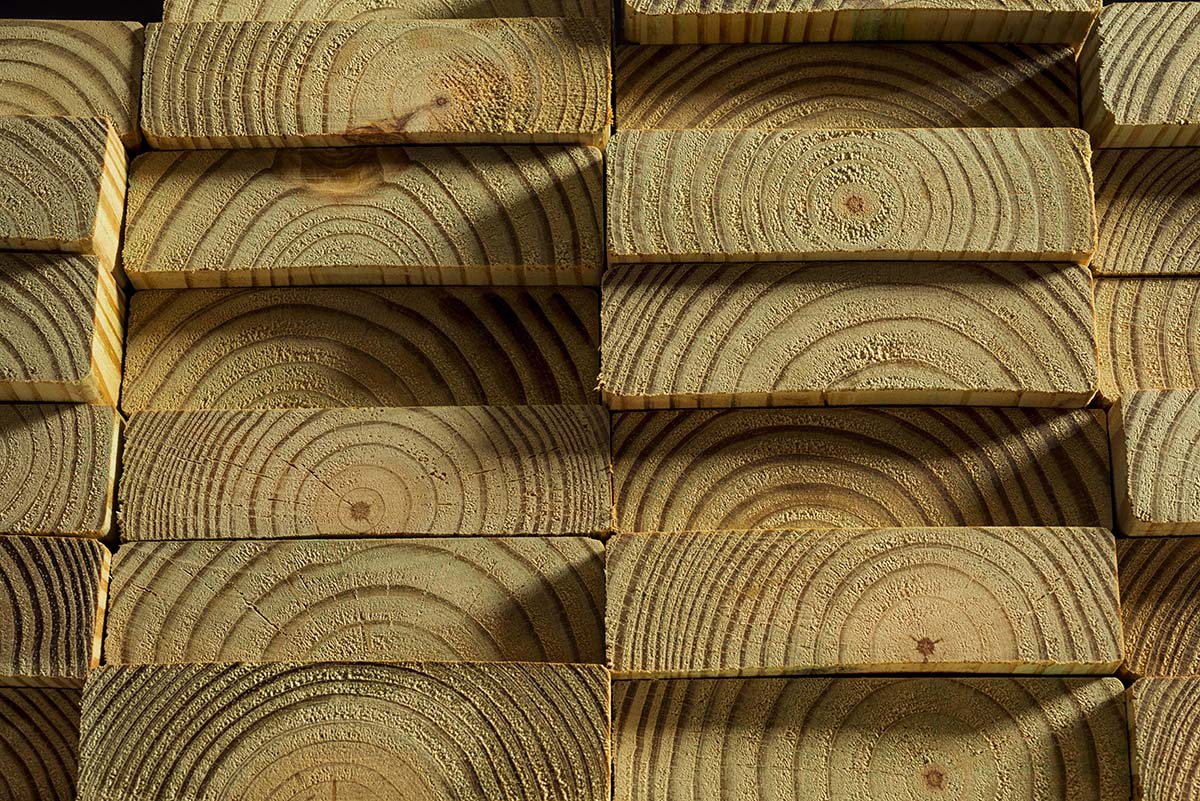Whether you’re aware of it or not, treated lumber has played a huge role in your life. For those of you who don’t know, treated lumber moves millions of goods across the globe every day, supports countless buildings, and might even hold up your backyard deck.
All that being said, it’s safe to say that treated lumber is one of the most important (and most in-demand) commodities on the market.
In order to accurately answer the question, “Should I buy treated lumber?” you first need to understand why lumber is treated, the most popular forms of lumber treatment, and the applications and uses of different treatments.
Why Do I Need Treated Lumber?
In the Southeastern United States, lumber is one of our most valuable assets. It drives industry, builds homes, and helps get our products from A to B. Despite these positives, environmental factors such as humidity, extreme heat, extreme cold, and infestation can all cause wood decomposition at a rapid pace.
Even if these expediating factors are absent, untreated wood’s lifespan is about 3-5 years. After that, structural decay and decomposition are inevitable.
*Cue Treated Lumber*
Because lumber has a relatively short lifespan, lumber treatment is desperately needed. Treated lumber holds up better to wear-and-tear, rot, and possible insect infestations. There are several techniques used to create treated lumber – we’ll start with kiln drying.
Because lumber has a relatively short lifespan, lumber treatment is desperately needed. Treated lumber holds up better to wear-and-tear, rot, and possible insect infestations. Share on XKiln Drying
Moisture has time and time again proven to be the enemy of wood and the champion of mold. That’s why kiln drying is the first step for almost all treated lumber.
Sawmills do this by taking freshly sawn lumber and essentially putting it in a room-sized oven. Through this process, the lumber is dried out. Dried lumber is substantially less prone to developing mold and warping. Kiln drying itself could be considered a form of lumber treatment simply because it takes preventative measures for the wood.
Although kiln drying prevents decay derived from moisture, it doesn’t prevent other problems and is not compliant with international shipping standards.
ISPM 15
Speaking of international standards, let’s talk about ISPM 15.
ISPM 15 is a type of heat treatment designed to eradicate any potential insect infestations that may be present in the lumber. ISPM itself is a phytosanitary measure agreed upon by the international community in the UN. We don’t want their bugs, and they don’t want ours.
As far as ISPM 15 application goes, this can be done in a handful of ways. Older methods of ridding wood of insects include chemical fumigation with methyl bromide. Over the course of time, lumber treaters have moved away from methyl bromide fumigation and are moving toward more thorough heat treatment.
ISPM 15 heat treatment is similar to kiln drying but has a few key differences. Kiln drying takes place over a longer period of time and slowly dries out the lumber whereas ISPM 15 heat treatment can be done relatively quickly.
ISPM 15 heat treatment is similar to kiln drying but has a few key differences. Kiln drying takes place over a longer period of time and slowly dries out the lumber whereas ISPM 15 heat treatment can be done relatively quickly. Share on XDuring ISPM 15 heat treatment, the core temperature of the treated lumber must reach 56 degrees Celsius for a period of 30 minutes. This specification ensures that any and all possible insects are eradicated, as well as ensuring that the wood is rid of most of its moisture.
Different from other treated lumber, ISPM 15 requires an internationally recognized stamp to verify that products are ISPM 15 compliant. If your wood products are leaving the United States, you might as well think of this stamp as your treated lumber’s passport.
Want to know more about ISPM 15? We’ve got you covered.
Thinking Green
Although not as common in industrial lumber and wood packaging, green treated or pressure-treated lumber is one of the most common commercial lumber treatments on the market.
Have you ever seen lumber that looked green on a construction site? No, this isn’t because it’s new, it’s because it’s been treated with a special mixture of chemicals called ACQ. Alkaline Copper Quaternary (ACQ) treated lumber is designed to increase the longevity of the wood, preventing it from drying out and decaying earlier than untreated lumber. Over time, the green hue of this treatment fades but its effects are long-lasting.
Copper Treatment
Much like other pressure-treated lumber, lumber treated with Copper Azole (CA) gives lumber a unique shade when applied. CA treatment gives lumber a brown hue but fades over time. Copper Azole treatment is an older form of lumber treatment, but it’s still highly effective – it prevents rot, decay, and termites.
Keep in mind, due to chemical treatment, both CA and ACQ treated lumber may not be safe for certain applications. All chemically treated lumber has different below-ground, surface level, or above-ground standards. Typically, each different category has a different chemical concentration.
We Hope We’ve Treated You With This Info!
Whether it’s kiln-dried, ISPM-15 compliant, or a form of chemically treated lumber, treated lumber plays a vital role in transportation, supply chains, and construction across the globe. Hopefully, now that you know more about your options, you can answer the question, “Should I buy treated lumber?”



![[PRESS RELEASE] Conner Industries Announces Website Dedicated to Integrated Packaging Division](https://conner.b-cdn.net/wp-content/uploads/2024/05/Conner-Packaging-Blog-500x383.jpg)



